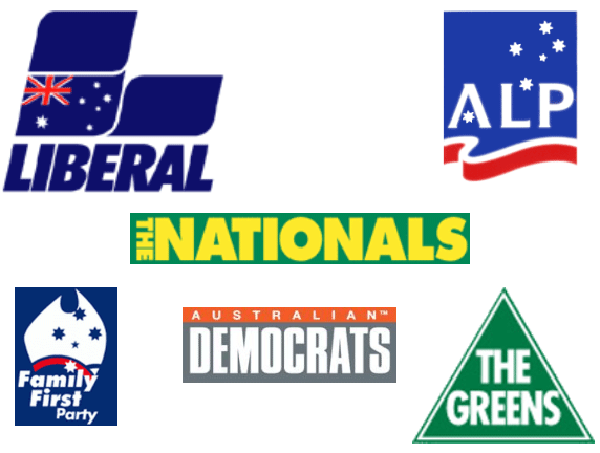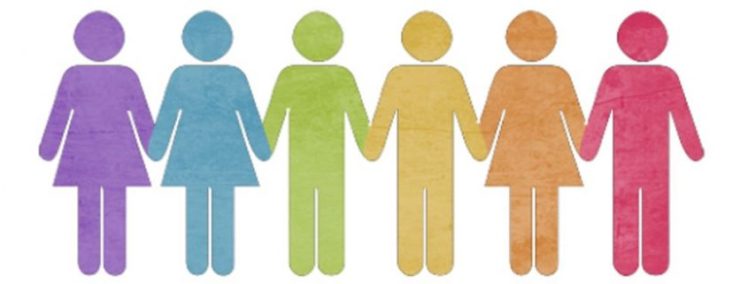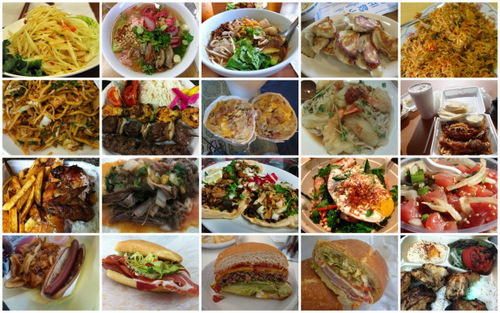Doing business in Australia is a terrific opportunity for you to experience a society where the cultural diversity is much larger than it is in Saudi Arabia. The experience will help broaden your horizon, but to do so you will need to prepare for what is to come.
Australia is considered one of the most culturally diverse countries on the planet, the country has always been welcoming to business people, students, immigrants and tourists from all over the world. Cultural diversity as a concept is about accepting and respecting the differences between cultures. Below we have outlined some of the ways that the cultural diversity of Australia presents itself and how it compares to Saudi Arabia.
-
Ethnic Groups

(Source: id.com.au. Image by Rebecca)
When compared to Middle Eastern countries, the ethnic composition of the Australian population is a lot more diverse. In 2006, 24 percent of the 21 million Australians were born overseas. Australia is the home people with more than 270 different ancestries living together (Low et al., 2010). Aussie’s enjoy their diverse community and they are very proud of it. The majority of the population has an ancestry that stems from a European country, followed by people with ancestry from Asian Countries and people with Indigenous Australian ancestry respectively. A minority of the population stem from Middle Eastern, South American African families (border.gov.au, 2013). Being a foreigner, you should be careful about when to discuss immigration and aboriginals issues and generally should not do so until your Australian host do so.
2. Languages

(Source: amfastech. Image by KARETI)
G’day mate! Australia has no official language, which is understandable given the sheer variety of different languages spoken in the country. Australians speak more than 200 languages, with several different accents (border.gov.au, 2013). If you are looking do to business however it is essential for you to learn and practice your English and being familiar with some of the Australian slang will not hurt either. English is considered as the national language and is the spoken language in a business meeting (Abs.gov.au, 2017).
-
Religion and Belief

(Source: jwwartick. Image by WARTICK)
The Australian Constitution guarantees freedom of religion. More than 60 percent of Australia’s population are Christians, 2.2 percent are Muslim, 1.3 percent are Hindus, 0.5 percent practices Judaism and 22 percent of Australians state that they have no religion (border.gov.au), 2013. It is easy to find prayer rooms or Mosques, Churches or temples nearby while you are in Australia (Nelson et al., 2012).
-
Political Beliefs

(Source: aec.gov.au. Image by Unknown)
Do not panic if a casual social event like a barbeque party turns into political debate, discussing politics and especially ridiculing politicians is a way for Australians to build relations and is not taken that seriously. The political system in Australia is federal parliamentary constitutional monarchy. All Australians are equal before law. They have the freedoms of speech and parliamentary democracy. Australians feel good when they talk about politics. In contrast, in a business meeting try to avoid talking about politics unless the Australian host do (Maddox, 2000).
-
Gender

(Source: theconversation. Image by Sah)
Gender diversity and equality is one of the most important components of the Australian culture. Women are not subject to any kind of religious restriction and public interaction between genders is not limited. According to the Global Gender Gap Report 2015 , Australia’s gender gap is ranked 36 in the world, while Saudi Arabia ranks 134 on the very same list (Global Gender Gap Report, 2015). Women in Australia have taken managerial and leadership roles, and the best example of that is Queen Elizabeth II. Therefore, if you are aiming for a successful business trip, you have to expect that you will meet a male, female or transgender manager, co-worker or even a bus driver.
-
Sexual Orientation

(Source: wrongfulterminationsettlements. Image by Unknown)
Equality and freedom from discrimination are fundamental human rights that are highly valued in Australia. The Australian Sex Discrimination Act 1984 was modified in 2014 to make Sexual discrimination illegal. However, lesbian, gay, bisexual, and transgender people are still facing discrimination in the workplace, which is something that you risk experiencing. For example, a study on Sexual orientation-based wage gaps in Australia, reports that lesbians earn a wage premium of 0%-13% while gay men experienced a negative wage gap of 8%- 18% (Wgea.gov.au, 2017).
-
Clothing

(Source: abhow. Image by Unknown)
People in Australia are generally very laid back, there is no official national dress and people normally wear western style clothes. Many Australian traditions are historically influenced by the traditions of British people. Many workplaces in Australia hire people from diverse cultures, the result is that headscarves (Hijab) for Muslims and turbans for Sikh can be worn anytime. While in an official business meeting, Australians prefer dark suits, white shirts and a tie while women prefers smart dress or business suit which goes with the occasion. However, outside of working hours you can wear anything, unless it create a safety hazard.
-
Food

(Source: winstonculc. Image by Winston)
If you like Japanese Sushi, Chinese Hot Pot, Middle Eastern Falafel and Hummus, Turkish Doner Kebab, Italian Fettuccine, Brazilian Steak, American Hamburger or Indian Chicken Tikka Masala, then you are in luck. You will not have any problems finding your favourite type of food in Australia. Expect a few beers with your colleagues at a local bar and managers after a long Friday at work and if you don’t drink alcohol, having a soft drink like ginger beer is fine as well.
-
Physical Abilities

(Source: ausleisure. Image by Unknown)
People with a limited physical abilities are guaranteed by law to have equal rights of work, study, movement and much more (Humanrights.gov.au, 2017). For example, the Australian government has equipped the public transportation network and the streets so that they are suitable for physically disabled and blind people to facilitate their life. Moreover, most buildings are designed to serve both people with and without limited physical abilities.
REFERENCE LIST
Abs.gov.au. (2017). 1301.0 – Year Book Australia, 2006. [online] Available at: http://www.abs.gov.au/ausstats/abs@.nsf/0/D696154A0D5CBBE3CA2570DE0006ED55?opendocument [Accessed 2 May 2017].
Australian Political Parties in the 21st Century. (2011). [image] Available at: http://www.aec.gov.au/About_AEC/Publications/youth_study/youth_study_4/page02.htm[Accessed 27 Apr. 2017].
border.gov.au. (2013). The People of Australia. [online] Available at: https://www.border.gov.au/ReportsandPublications/Documents/research/people-australia-2013-statistics.pdf [Accessed 28 Apr. 2017].
Global Gender Gap Report 2015. (2015). Rankings. [online] Available at: http://reports.weforum.org/global-gender-gap-report-2015/rankings/ [Accessed 24 Apr. 2017].
Humanrights.gov.au. (2017). Know your rights: Disability discrimination | Australian Human Rights Commission. [online] Available at: https://www.humanrights.gov.au/know-your-rights-disability-discrimination [Accessed 27 Apr. 2017].
KARETI, S. (2016). How Important is the ‘Language’ You Use in Your Blog?. [image] Available at: http://www.amfastech.com/2014/07/how-important-is-language-you-use-in.html[Accessed 28 Apr. 2017].
Low, L., Anstey, K., Lackersteen, S., Camit, M., Harrison, F., Draper, B. and Brodaty, H. (2010). Recognition, Attitudes and Causal Beliefs regarding Dementia in Italian, Greek and Chinese Australians. Dementia and Geriatric Cognitive Disorders, Vol. 30, No.6, pp.499-508.
Maddox, G. (2000). Australian Democracy and the Compound Republic. Pacific Affairs, Vol. 73, No. 2, p.193.
Nelson, J., Possamai-Inesedy, A. and Dunn, K. (2012). Reinforcing substantive religious inequality: a critical analysis of submissions to the Review of Freedom of Religion and Belief in Australia Inquiry. Australian Journal of Social Issues, Vol. 47, No.3, pp.297-318.
REPORT IDENTIFIES BARRIERS TO DISABLED AUSTRALIANS PARTICIPATING IN SPORT. (2017). [image] Available at: http://www.ausleisure.com.au/news/report-identifies-barriers-to-disabled-australians-participating-in-sport/ [Accessed 6 May 2017].
Sah, P. (2016). Evidence shows science benefits from having researchers from both genders and a wide range of backgrounds. [image] Available at: http://theconversation.com/the-evidence-is-in-greater-gender-diversity-in-science-benefits-us-all-55643 [Accessed 25 Apr. 2017].
Sexual orientation, gender expression or gender identity discrimination at the work place. (2016). [image] Available at: https://www.wrongfulterminationsettlements.com/reasons/sexual-orientation/ [Accessed 28 Apr. 2017].
Wartick, J. (2011). Religious Pluralism: The Argument Assessed. [image] Available at: https://jwwartick.com/2011/02/05/rel-plur-assessed/ [Accessed 27 Apr. 2017].
Wgea.gov.au. (2017). Home. [online] Available at: https://www.wgea.gov.au/progress-australian-research/sexual-orientation-based-wage-gaps-australia [Accessed 2 May 2017].
Who are our migrants?. (2011). [image] Available at: http://blog.id.com.au/2011/population/australian-demographic-trends/australia-newest-migrants/attachment/who-are-our-migrants/ [Accessed 28 Apr. 2017].
Winston (2016). So, what kind of food do you like?. [image] Available at: https://winstonculc.wordpress.com/2016/06/13/2-the-challenge-of-managing-diverse-teams/ [Accessed 6 May 2017].